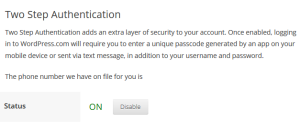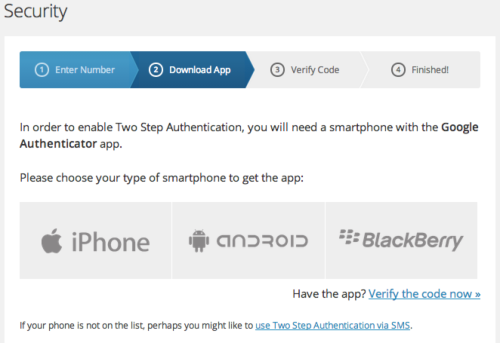 Over the weekend, we reported that WordPress For iOS 4.0 was released. Not only did I upgrade, but I also enabled the single-sign on Jetpack module for WPTavern.com and two-factor authentication for my WordPress.com user account. Within the comments of the post, Jonathan Lyman mentioned WordPress For iOS is incompatible with two-factor authentication:
Over the weekend, we reported that WordPress For iOS 4.0 was released. Not only did I upgrade, but I also enabled the single-sign on Jetpack module for WPTavern.com and two-factor authentication for my WordPress.com user account. Within the comments of the post, Jonathan Lyman mentioned WordPress For iOS is incompatible with two-factor authentication:
Just a small heads up for those who’ve never used the WordPress for iOS app before. If one has a two-factor authentication plugin active, the WordPress app will not be able to login to a self-hosted site.
WordPress App Doesn’t Accept Login Credentials To WordPress.com
When trying to manage my self-hosted WordPress site within the app, I repeatedly received prompts to login to WordPress.com. Using the same password I use on my desktop didn’t work. No matter what I tried, I couldn’t successfully login to WordPress.com from within the mobile app.
However, if I was quick enough, I could still browse comment notifications, create new posts, etc. I determined that only items within the app that require an authenticated connection to WordPress.com stopped functioning. While browsing the support forum, I discovered forum threads where other users reported login issues using two-factor authentication.
How I Solved The Problem
I logged out of WordPress.com using my desktop. I logged back in using my desktop, used the keycode given to me by the Google Authenticator app and now, stats work, as does the rest of the app without pestering me to login to WordPress.com.
So if you’re repeatedly asked to login to WordPress.com after enabling two-factor authentication, I’d try logging out of WordPress.com using your desktop and login again. Then determine if the app detects your validated connection to WordPress.com. This solved the problem for me.
If you still experience issues related to two-factor authentication, please report them using the WordPress For iOS Support forum.
Has anyone else gone through the same experience after enabling two-factor authentication?

I posted about this exact issue last month after having a similar experience. It’s definitely not the easiest thing to figure out on the first try.